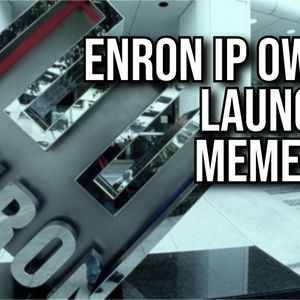Summary Cipher Mining Inc. received a $50 million investment from SoftBank, boosting its expansion into high-performance computing (HPC) data centers and increasing its stock by 22%. Despite a -20.97x P/E ratio, CIFR's 63.47% jump in adjusted operating earnings signals rapid transformation, attracting growth investors' attention. The balance sheet shows CIFR's financial prudence with $25 million cash against $23 million debt, and low power costs, ensuring resilience against Bitcoin price drops. CIFR's future hinges on scaling mining operations and securing HPC contracts; if successful, the stock could be 3-5x by 2026, but it's a high-risk trade. Thesis Cipher Mining Inc. ( CIFR ) , an American tech firm, builds and runs four massive Bitcoin mining data centers in Texas. A few days ago, the company got a sizable cash injection- $50 million , to be exact-from SoftBank Group Corp. ( SFTBY ), one of the world's heavyweight investment firms, through a PIPE deal. This move helps Cipher expand into high-performance computing (HPC) data centers and makes SoftBank a major investor in the company. Seeking Alpha Right after the announcement, CIFR shares jumped 22%, finishing the day at $5.73. This rise builds on an already strong run, with the stock up nearly 90% over the past year. But it hasn't all been smooth sailing. Wall Street analysts are bullish on the stock with a " Strong Buy " rating, but Seeking Alpha's Quant metrics disagree, firmly labeling it a " Sell ." With SoftBank's investment giving CIFR a caffeine overdose, I'll take a closer look at the numbers to see if this latest rise is just a temporary jolt or the start of something bigger for CIFR. SoftBank's Strategic Investment SoftBank's $50 million PIPE investment in Cipher Mining is a calculated bet that positions CIFR at the intersection of two high-stakes industries: Bitcoin mining and high-performance computing (HPC) infrastructure. High-Performance Computing (HPC) is the use of supercomputers and parallel processing to handle complex problems that regular computers can't manage. HPC systems are the muscle-bound workhorses of scientific research, engineering simulations, financial modeling, and data analytics-essentially anywhere mountains of data need crunching at speeds that would make a regular computer curl up in a corner and whimper. Market Growth and Future Projections A few years ago, the global HPC market was valued at around $48.51 billion and is expected to grow at an annual rate of 8.1% through 2030. A major driver of this growth is big data . Companies in industries like healthcare, finance, and automotive are dealing with more information than ever, and they need advanced computing power to analyze it quickly. Artificial intelligence and machine learning are also being woven into these systems, making them even more useful for tasks like predicting trends, modeling real-world scenarios, and crunching real-time data. Cloud-based solutions are also becoming especially popular because they offer flexibility and cost savings, which is great news for smaller businesses that can't afford their own supercomputers. Besides that, governments are also investing heavily in HPC, with initiatives like the European High-Performance Computing Joint Undertaking ( EuroHPC JU ) pouring billions into building a continent-wide supercomputing network. SoftBank's Bigger Picture As for CIFR, my immediate takeaway is that SoftBank, with a history of aggressive tech bets - Alibaba, WeWork, Uber, Slack, Wirecard, DoorDash, to name a few (some win, some lose spectacularly, like WeWork), sees enough potential in Cipher's infrastructure to anchor itself as a primary investor, acquiring a 10.4 million-share stake. That's not pocket change, but the real story isn't the cash-it's the possible domino rally this financial flick of the finger kicks off. SoftBank's recent $500 billion " Stargate " AI infrastructure project, backed by heavyweights like Sam Altman and Larry Ellison, suggests a pattern: they're assembling a portfolio of assets that can underpin next-gen tech, from AI training to decentralized compute networks. CIFR's Barber Lake site , now under a one-month exclusivity lockup, could be a critical node in that ecosystem. Think energy-rich Texas real estate, scalable data centers, and the latent ability to pivot between Bitcoin mining and HPC workloads. That flexibility is gold in a market where demand for AI compute is exploding, and Bitcoin's volatility forces miners to diversify or die. The Cost of Expansion CIFR's move into HPC, however promising it may seem, is hardly unique, as competitors are looking to do much the same thing. While the $50 million certainly provides some financial breathing room, the reality is that building out HPC infrastructure is an expensive and resource-heavy process. And it's hard to ignore Bitcoin's constant price swings , which continue to be a major factor in all of this. BTC-USD Bitcoin USD 1M price action (Seeking Alpha) So if the market tanks, CIFR's mining revenue could crater, leaving HPC ambitions half-funded. And the exclusivity period on Barber Lake adds more pressure. If SoftBank walks away after 30 days, CIFR's bargaining power with other suitors diminishes. Could that also force a fire sale? Conversely, if SoftBank doubles down, CIFR becomes a pawn in a much larger game, reliant on a single investor's whims. Even so, there's plenty of potential, which is why we saw yesterday's price pop. SoftBank's backing lends credibility to CIFR's infrastructure as a link between crypto and AI, a story that could catch the attention of institutional investors. Valuation and Growth Potential FAST Graphs CIFR's -20.97x blended P/E ratio, on paper, is definitely a glaring red flag, signaling a company hemorrhaging money under GAAP standards. But here's where context matters-CIFR isn't some stagnant legacy firm clinging to outdated models. A 63.47% jump in adjusted operating earnings is the kind of number that gets growth investors to sit up and pay attention, a clear sign that the company's transformation is moving faster than the market's usual tolerance for waiting. A Path to Profitability Seeking Alpha The expected 143% EPS growth in 2025 and 49% in 2026 is a potential path to profitability that, if it actually happens, would bring the forward P/E ratio down to a remarkably low 7.35x by 2026. That kind of multiple in the Bitcoin mining sector-where operational leverage to BTC price swings often justifies premium valuations-smacks of mispricing. But those forecasts hinge entirely on CIFR's ability to scale its mining operations while threading the needle on its HPC pivot, all without tripping over liquidity constraints or Bitcoin's notorious volatility. Seeking Alpha The balance sheet is CIFR's crown jewel, and in this industry, that's saying something. In a sector where competitors are drowning in leverage, CIFR's $25 million cash cushion against $23 million debt is almost comically conservative. Add to that their rock-bottom power costs of $0.027/kWh -practically a moat-and you have a miner that can survive Bitcoin price drops that might take out its competitors. Their Odessa facility upgrade, which increases hash rate by 60% without using more power, is a textbook example of operational efficiency. The Harsh Reality of Q3 Seeking Alpha But let's not get carried away: the Q3 GAAP net loss of $87 million-up from $15 million just the prior quarter-is a gut punch. A 35% revenue plunge, driven by Bitcoin's price weakness (this is the pre-early November 2024 breakout) and post-halving cost spikes at JV sites, exposes the fragility of their current model. When your "cheap" Texas power contracts start looking less advantageous because ERCOT prices are tanking, you're reminded that even moats can spring leaks. Then there's the HPC gambit-the strategic wildcard that could either catapult CIFR into the infrastructure big leagues or leave it stranded with half-built data centers. Hyperscaler demand for AI-ready capacity is white-hot, and CIFR's Texas land grabs (Black Pearl, Barber Lake) position them in the sweet spot of the data center arms race. If they lock in blue-chip tenants, this pivot could transform them from a crypto beta play into a secular growth story with contracted cash flows. But when we rewind the clock, as of the Q3 update from management, there were no signed contracts, and the clock is always ticking. If HPC deals don't materialize by 2025, those sites become stranded Bitcoin mining assets in a saturated market. The total levered free cash flow (negative $219.2M for TTM) suggests a significant cash burn. (Seeking Alpha) That said, liquidity is one of my biggest near-term concerns here. Burning $97 million in a single quarter leaves them with just $25 million cash and $95 million in Bitcoin-a fragile position (yes, I know this new administration is pro-crypto ) if BTC tanks or expansion costs overrun. The $67.5 million Barber Lake acquisition and $94 million in rig deposits are clear signs they're all-in, but if Bitcoin flatlines, they'll be forced to liquidate BTC reserves at fire-sale prices or issue equity into weakness. That $49 million fair value hit on their Odessa power contract is a reminder that derivative exposures can turn paper gains into real losses overnight. Final Takeaway: Buy Yet, despite all these risks, I can't ignore the asymmetry here. At a 2026 forward P/E of 7.35x-assuming they hit those sky-high EPS targets-CIFR looks cheap. Bitcoin's been consolidating, and if it breaks out again and HPC contracts materialize, this stock could 3-5x as the market prices in structural profitability and diversified revenue streams. For now, CIFR remains a binary bet: a leveraged play on Bitcoin's next cycle coupled with a speculative infrastructure buildout. Other institutional money might likely stay sidelined until HPC ink dries, but for retail like us and crypto-native investors willing to stomach the volatility, which they're notoriously willing to do, the risk/reward calculus here is compelling. Buyer beware-this is not a buy-and-hold call; it's a high-risk trade masquerading as an equity story.


![Concerns Grow as Dogwifhat [WIF] Faces Further Downside Risk Amid Advertisement Controversy and Analyst Predictions Concerns Grow as Dogwifhat [WIF] Faces Further Downside Risk Amid Advertisement Controversy and Analyst Predictions](https://resources.cryptocompare.com/news/77/39920224.jpeg)










